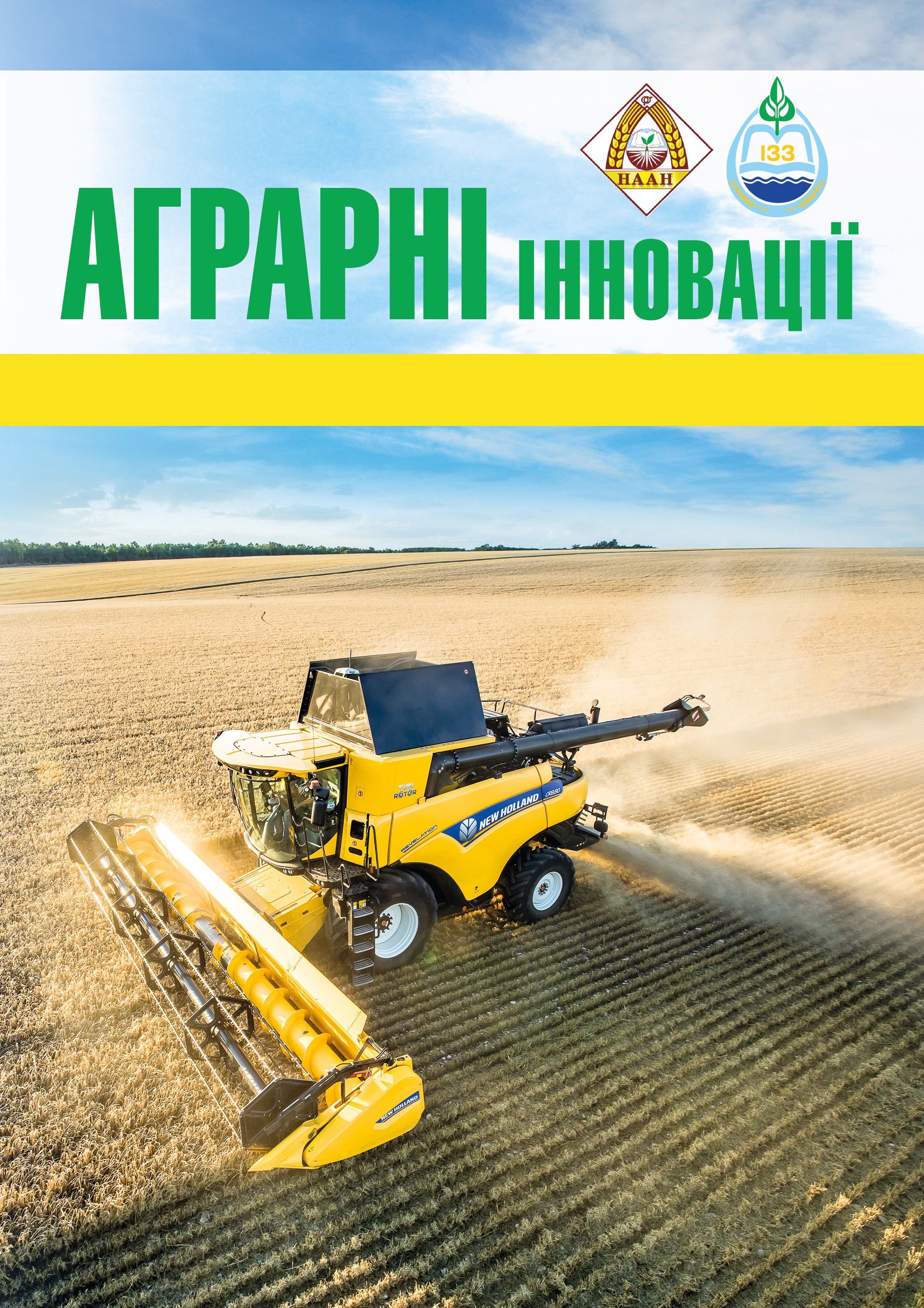Agrobiological bases of increasing the productivity of natural forage lands in the conditions of regional climate change in the steppe zone of Ukraine
Abstract
Purpose. Substantiate agrobiological bases and methods of increasing the productivity of natural forage lands, which is carried out by surface or radical improvement of them. Methods. On natural forage lands of all classes of the steppe zone, increasing the productivity of natural forage lands was achieved by expanding the acreage of the most drought-resistant species of Medicago sativa and Onobrychis arenaria. In the presence of up to 25-30% of valuable perennial grasses and legumes in the species Botanical composition, surface improvement was carried out (sowing perennial grasses, applying mineral nitrogen fertilizers, etc.), and on liquefied herbage of natural forage lands with a predominance of unproductive plants of the mixed grass group in the species Botanical composition. Results. The distribution of natural forage lands by class and their area in the steppe zone of Ukraine is given. The degree of moisture supply of perennial grasses during their growing season in different years of precipitation availability and its influence on changes in the species Botanical composition of existing grass stands of natural forage lands and, accordingly, on the productivity of the most common types of cereals and legumes of perennial grasses of the xerophyte group are established. The yield and energy intensity of absolutely dry matter of perennial grasses with surface and radical improvement of natural forage lands are given. The inclusion of various varieties and varieties of alfalfa and perennial grasses in the composition of grass mixtures contributed to a significant increase in the collection of basic nutrients: feed units by 0.67–0.70 t/ha (8.1–8.4%), digestible protein – by 0.55–0.57 t/ha (36.4–44.5%) and metabolic energy – by 7.4–10.6 GJ/ha (6.0–7.8%). Conclusions. Due to the surface improvement in the conditions of natural moistening (without irrigation) of unsalted hearth forage lands, their productivity significantly depended on the year of precipitation availability and changes in the species Botanical composition of grass species and grass mixtures over the years of their use. Cultivation of single–species crops of drought – resistant types of perennial legumes and medium wheatgrass during the first year of use in conditions of incomplete agriculture contributed to the yield of absolutely dry matter of Medicago sativa 3.30–3.32 t/ha, respectively, Onobrychis arenaria – 3.39–3.67 and Elytrigia – 3.24-3.44 t/ha. During the second year of use, the collection of absolutely dry matter of Elytrigia was 2.70–2.71 t/ha, Medicago sativa – 2.49–2.63 and Onobrychis arenaria – 2.73 t/ha, respectively, in the third year of use – 1.86–1.91 t/ha, 1.67–1.70 and 1.65–1.73 t/ha. With the radical improvement of the sandy lands of the Oleshky Arena in irrigation conditions, grass mixtures with the participation of Medicago sativa, Onobrychis arenaria, Dactylis glomerata and Lolium perenne turned out to be the most productive. The yield of absolutely dry matter of these types of grasses and their grass mixtures averaged 12.92–13.97 t/ha over five years, respectively, feed units – 8.76–9.39 t/ha; digestible protein – 1.99–2.06 t/ha and exchange energy – 135.7–146.3 GJ/ha.
References
2. Куксін М. В. Природні кормові угіддя УРСР. Харків: Держсільгоспвидав УРСР. 1935. 155 с.
3. Балюк С. А., Кучер А. В., Анісімова О. В., Кучер Л. Ю. Відтворення родючості ґрунтів: актуальні напрями економічного дослідження. Вісник аграрної науки. 2013. № 10. С. 59–63.
4. Постанова Уряду України від 21 березня 1980 року «О мероприятиях по повышению продуктивности естественных кормовых угодий в колхозах и госхозах Украинской ССР в 1980–1985 годах».
5. Иванов Н. Н. Показатель биологической эффективности климата. Известия Всесоюзного географического общества. 1962. Т. 94. Вып. 1. С. 65–70.
6. Медведовський О. К., Іваненко П. І. Енергетичний аналіз інтенсивних технологій в сільськогосподарському виробництві. К.: Урожай, 1988. 206 с.






